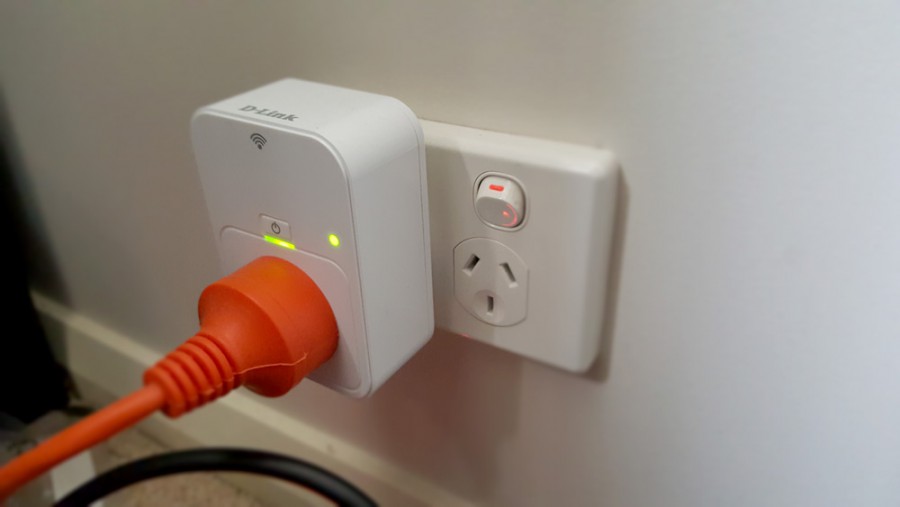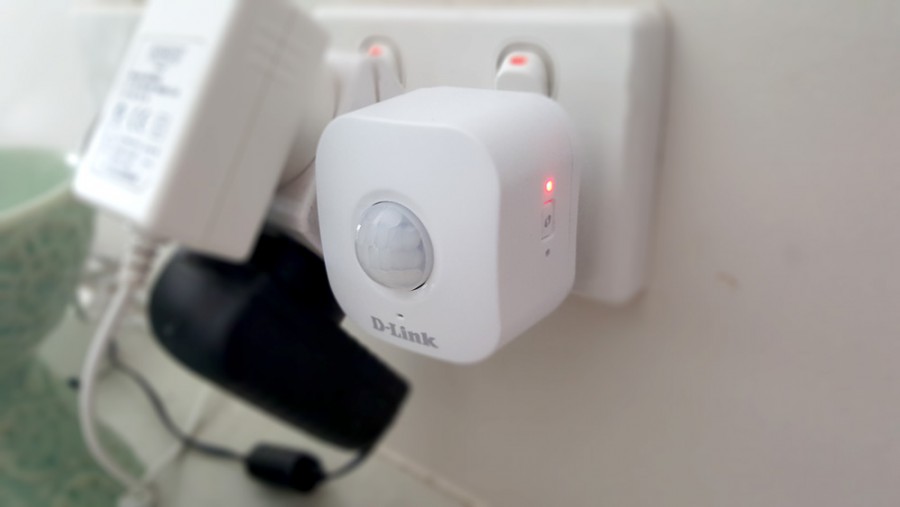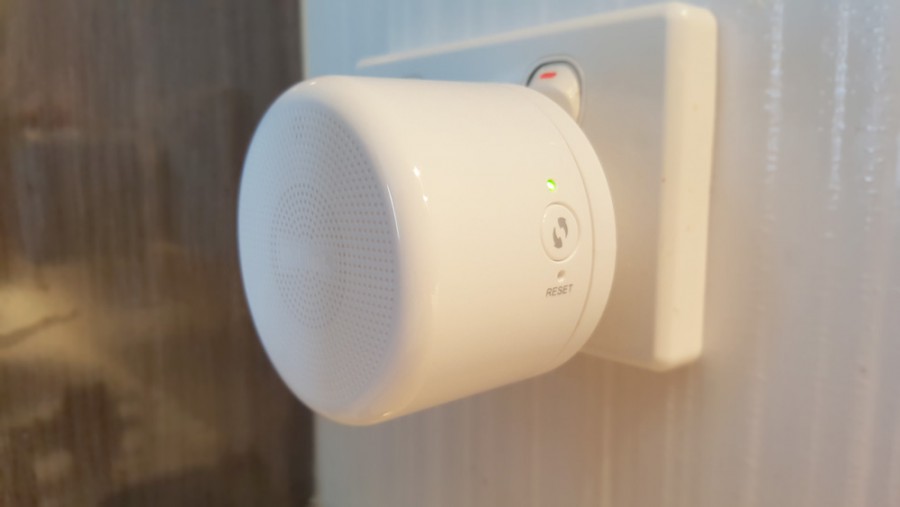
Creating a smart home happens in two ways, you pay $40,000 to a home installer, or you pick and choose the products that suit your lifestyle. D-Link has a range of new products that could form part of your smart home. The three new products are the WiFi SmartPlug, Motion Sensor and WiFi Siren. These come together to create a layer of home automation that includes presence, power management and security.
WiFi SmartPlug
Having the ability to turn devices on or off from your phone may seem like a cool party trick, but its really the scheduling that helps this product deliver real benefit. Image you always work between 8am and 6pm, if you have the SmartPlug between your outlet and your powerboard that houses your various home office devices, you could schedule it to automatically turn off. This will save power and avoid the hassle of turning things on and off at the switch.
You can really connect this to whatever you like, but commonly people will use this for lamps, which means even a dumb lamp bought 20 years ago, suddenly becomes a connected device. This connected device, as part of the D-Link family, can be activated not just on a fixed schedule, but also integrate with other products like the Motion Sensor.
Before we get to that I wanted to touch on a couple other features build into this new generation of SmartPlug. It also includes a temperature sensor and electrical power meter. Both of these data points can be used as a trigger to trigger an action like activating another D-Link product, or sending an email or push notification to your phone.
Assuming you don’t already have a connected Air Conditioner, you could use this to automatically turn the power on to your air con, if the room temperature reaches a certain min and turn off if it were to hit a minimum value set. This is all configured through the MyDlink Home app which is available on both iOS and Android. The problem with this idea is that the temperature sensor reads the 50 degrees Celsius, I assume the temperature of the electrical current running through it, not the ambient air temperature.


WiFi Motion Sensor
What was the territory of sophisticated security systems, is now a consumer product. Sensing motion in both light and dark conditions, this will tell you anytime motion is detected at the location you plug it into. Given this simplicity, it is easy to move the sensor whenever necessary.
By leveraging the event from the Motion Sensor, you can then trigger the SmartPlug to turn on or off. With these couple of basic items, you’ve now got a home security system. Using the app, you can configure actions to only run if motion is detected within a set schedule.
One example of this would be 6am-9pm as your family gets ready for school and work and 3pm – 11pm. Outside those hours the motion events would trigger actions of your choice.


WiFi Siren
One such action you may want when unintended motion occurs, is to sound an alarm. Turning on a light will scare off some intruders, but a siren will scare off more. It’s designed to sound at a loud volume to get people in the real world to take action. The WiFI Siren can blast sounds up to 100db, that’s louder than vehicle exhausts are permitted to be, so there’s a good chance your neighbours will hear it. This volume is easily adjustable through the app.
You can select from a number of siren tones, Emergency, Fire, Ambulance, Police, Beep and even door chime, another possible use for these devices. The sirens don’t match our emergency services here in Australia, but they’ll get the job done.
Its easy to setup Actions in the mobile app and if you choose to use the three products together for a home security system, you could configure it as such.. If motion is detected (Motion Sensor), then turn on a light (SmartPlug) and sound the alarm (Siren).
Price and availability
D-Link’s Smart Home Products are available from D-Link website, or your favourite electronics retailer. The long list includes Bing Lee, Costco, Dick Smith, Domayne, Harvey Norman, JB Hi-Fi, Leading Edge Computers, Myer, Office Works and The Good Guys.
The Wi-Fi Smart Plug is available as a single item for A$69.95 or if you’ve fallen in love with the idea, they do come in packs of 2 for A$149.00. Strangely this is more than two smart plugs individually, so I wouldn’t recommend that.
There’s also a Smart Sensor Kit for A$229.95 that gets you 2x Smart Plugs and 1x Motion Sensor, given the Sensor sells for $99.95 individually, this ends up being a good discount (A$39.90) on buying the 3 products individually.
The WiFi Siren costs A$129.95 which is certainly not cheap, but there’s not a lot of options for products like this, certainly not one that integrates as well if you’re already in the D-Link ecosystem.
Overall
The number of smart home platforms is expanding rapidly and unfortunately our dream of IoT and connected devices just working together, is pretty far from the truth. Services like IFTTT help bridge the gap between manufacturers, but if you do buy off-brand, you’ll likely find yourself with a app folder on your phone to manage all your smart devices. It is worth mentioning D-Link also offer a Wi-Fi camera that also works within their myDlink Home app.
As someone who owns LIFX smart light bulbs, I wish I could configure those to react when motion is detected with the D-link sensor. The very similar, competitor Belkin WeMo products are supported by IFTTT as well as my favourite home automation app on Yonomi, which is the closest thing we have to making all this ‘just work’.
Home Automation is in its infancy and rather than create walled gardens, consumer adoption will be driven by simplicity. The ability to plug smart devices into a regular power point and turn a dumb device into smart one, is a massive win. However manufacturers won’t win if they don’t integrate.
The D-Link Connected Home products are well made and I could easily imagine them still running perfectly in 10 years from now. Something I would like to see is a refinement to the footprint of the devices so they can easily fit in a double power point and allow the adjacent outlet to remain usable. Almost all smart products right now are too big which means the consequence of making your house smarter, is more double adapters and powerboards (less smart).
For someone who doesn’t have a food in an brand’s camp right now, I’d absolutely recommend you check out the D-Link offerings. While the prices aren’t exactly stocking stuffers, it is important to remember this is likely a product you can buy and never have to think about again.
